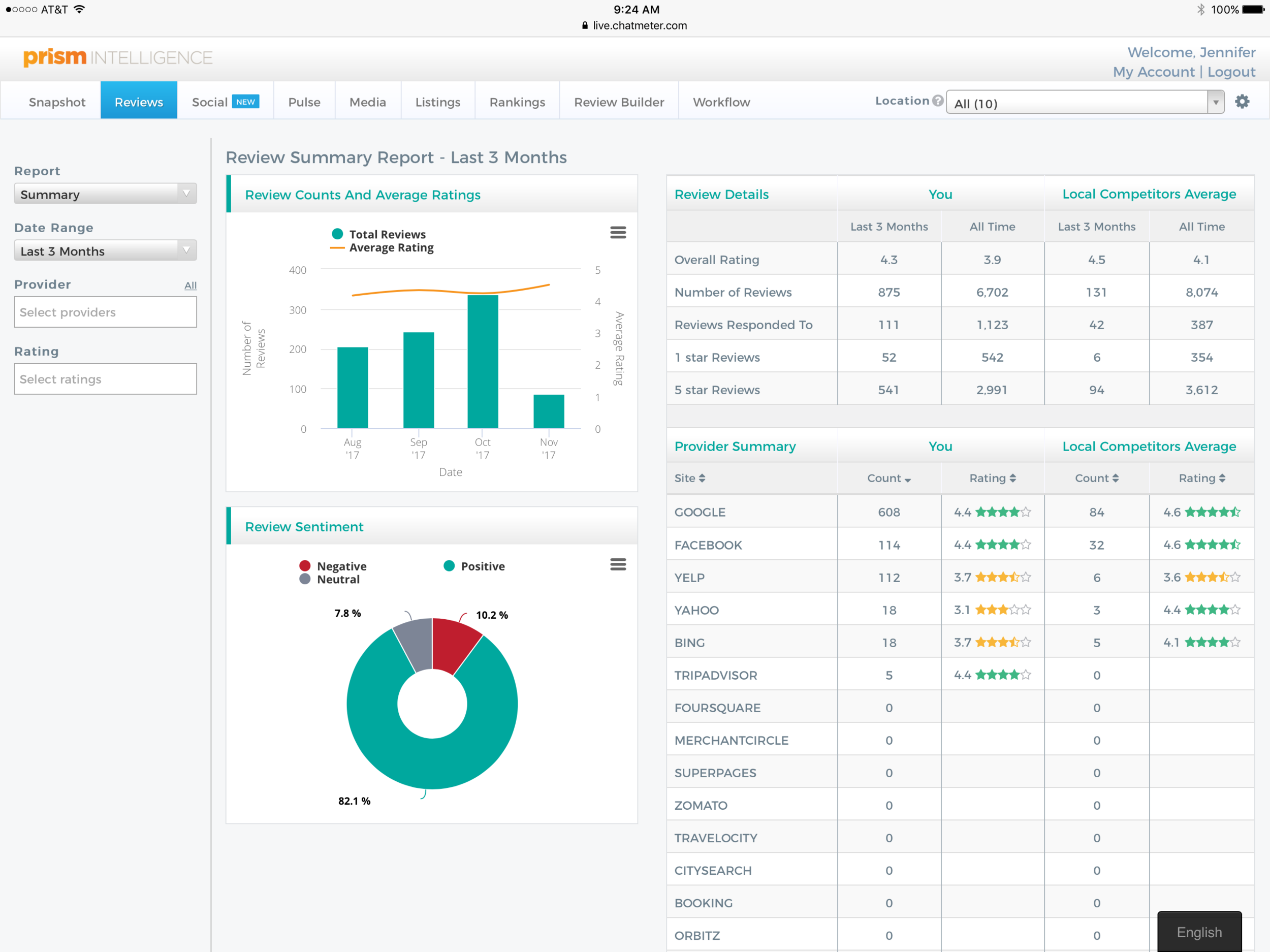Every company is different and businesses visualize and consume their Brand and Customer Experience Measurement data in different ways. When it comes to data deliverables, one size definitely does not fit all. When selecting a data collection partner, it is imperative that you ensure you are able to receive your data the way you need and expect it.
There are several methods available - and no matter which way you and your clients prefer it today, make sure you have all the options available to you - because it is guaranteed to change in the future.
Reporting Dashboards
Robust and Intuitive Data Visualization is mandatory in today's demanding business climate. Everyone on the team, everyone from front-line leaders to C-level decision makers needs to be able to quickly see, explore and extract data to identify defects, spot trends, capture best practices and ensure that the entire organization remains on a successful, positive trajectory.
Make sure that the Dashboard you use allows for easy and sophisticated customization: Custom Client Branding, Custom Data Views, Custom User pages and Custom Reports. Hierarchical User controls and restrictions ensure data is properly compartmentalized - and every user should have appropriate level-controlled access - at no per user charge. Some platforms charge per user - which is both totally unnecessary and extremely expensive.
Trend Graphs, Pre-built Reports, Media File Galleries, Advanced Analytics Tools and an intuitive, easy-to-master user interface are essentials. And make certain you can view and explore all your data together in the same place: Mystery Shops, Internal Audits, C-Sat Surveys, Competitive Price Audits and Brand Reputation Management data should be displayed together - because it is all interrelated and important.
And the best Dashboards are able to empower clients with the ability to manage their own data - even to review and edit prior to downstream release, to manage corporate users - even to manage their locations to ensure everything is current, correct and under control.
Open API
More sophisticated clients, and/or clients with more sophisticated systems will need to be able to pull the data from the provider into their platform automatically, at will. This is accomplished with an Open API (Application Program Interface) that allows two systems to connect, define what is to be shared, and let the machines do the delivery.
Make certain your data collection provider has an Open API and makes it available to you upon request. Without it, your largest and most advanced clients will be unsatisfied at best, and most likely need to look elsewhere to have their needs met.
Cloud Exports
Cloud Exports are a suite of delivery methods that allow clients (and individual users within clients) to schedule which reports they want delivered, how they want them delivered and with what frequency/on what schedule.
For example, some users may want certain reports to arrive every Monday morning at 8am local time. Others may prefer specific reports on the last day of each month, first day of the week, end of the quarter, etc. Be certain you are able to accommodate such needs with ease.
In addition, make sure you are able to deliver the data via any method your clients need. There are several Cloud Export delivery channels: FTP, sFTP and Email. All three are common - and your data collection partner should be able to accommodate all three.
Finally, everyone has different format needs and requirements. Some want PDF's, others need Excel .CSV files and still others require SPSS formatting. No matter your (or your clients') format needs, make certain your provider can deliver.
Dynamic Location Reports
Dashboards are designed to show users everything, from the top down and let decision makers dig deep. But it is at the granular, location-specific level where the action happens and the specifics matter most. It is therefore essential that your location reports are the best in the industry.
PDF reports are an artifact of yesteryear: static pictures of a page. Dynamic, living reports are the cutting edge of the industry. These are reports that update in real time as new data comes in. Their embedded charts and trend graphs move as the environment evolves. They are always current, always accurate and always available.
Dynamic reports also allow for the most innovative additional functionalities: Make sure yours allow for Question Level Commenting (where management and staff can have a dialog - at the question level - within the actual report to seek explanations, demand action and document the entire exchange). Dynamic Reports also allow for interaction between client and data collection partners with features like Requests for Attention - where report recipients can, with a click, open a conversation with their partner to seek clarification, request changes and adjustments and address concerns.
And Dynamic Reports can, with a single click, be emailed to a predetermined list of eligible recipients or to anyone of your choosing. And, of course, they can be converted to PDFs with a click as well - if that's how they choose to roll.
Summary:
Every client is different. They have different systems, different corporate cultures, different processes and different preferences - and data providers must be able to accommodate every need, from the old school to the vanguard of data visualization and everything in between. When choosing a data collection partner - or evaluating your current one - these are the Mission Critical Must Haves that allow you to serve every client, every way.









